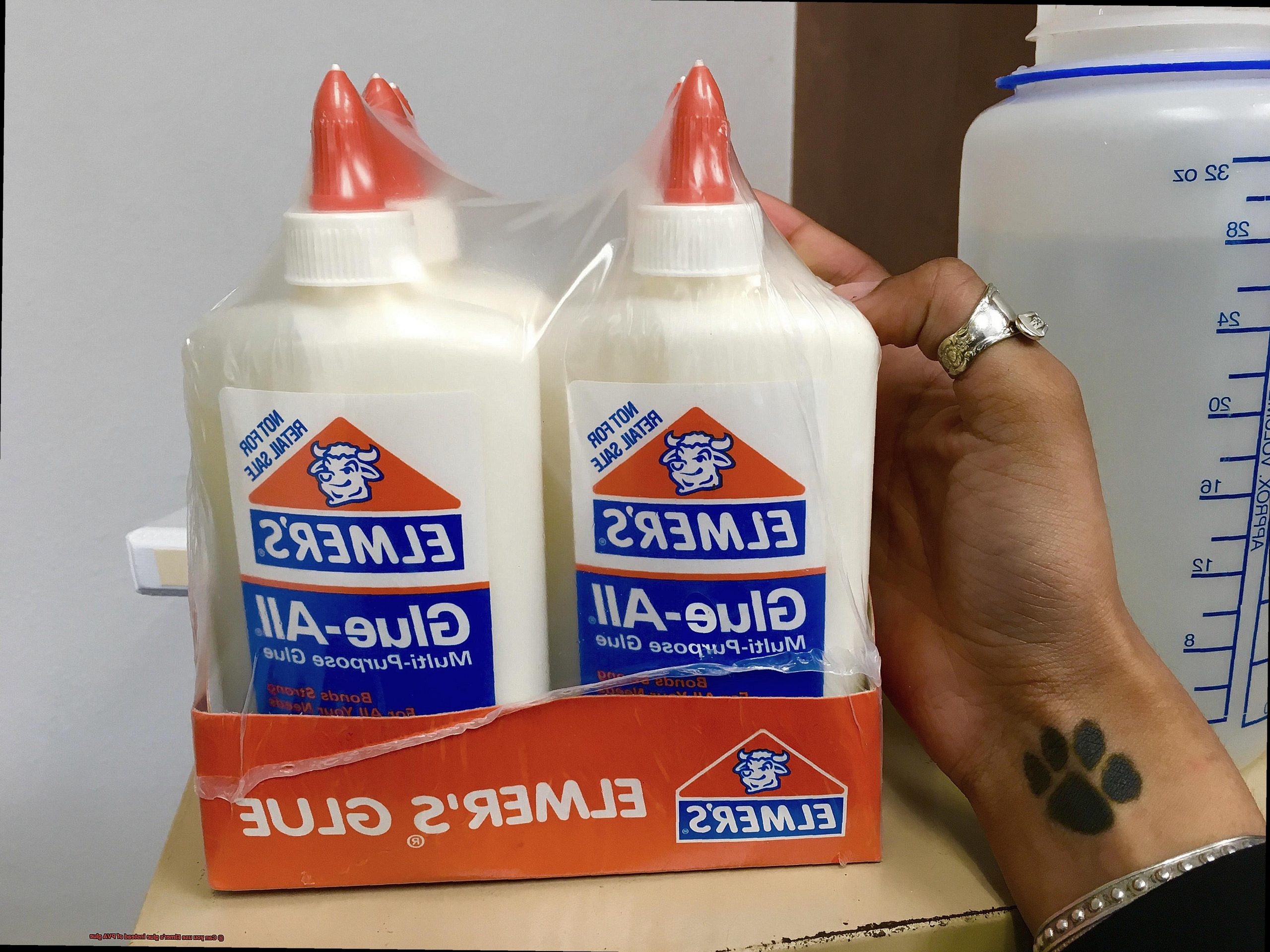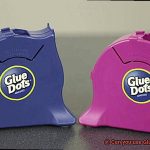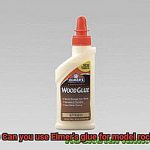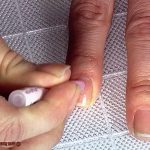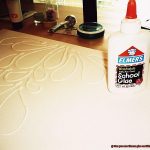Do you find yourself constantly running out of PVA glue and considering using Elmer’s glue as a substitute? Or are you simply curious if the popular household glue can do the same job as PVA glue? Well, look no further. This blog post will dive into everything you need to know about this topic.
For years, PVA glue has been the go-to for all crafts and DIY projects. But what if we told you that Elmer’s glue can also get the job done? From school projects to DIY home projects, Elmer’s glue has been used for a variety of tasks. And although most crafts suggest using PVA glue, Elmer’s can actually be a great substitute.
But does it provide the same stronghold as PVA glue? Can it be used on the same materials? These are important questions we’ll be answering in this blog post. We’ll be exploring the differences between PVA and Elmer’s glues, their applications, and their pros and cons.
So, whether you’re an avid crafter or just curious about these household glue options, sit back and get ready to learn all about using Elmer’s instead of PVA.
Differences Between Elmer’s Glue and PVA Glue
Contents
- 1 Differences Between Elmer’s Glue and PVA Glue
- 2 When to Use Elmer’s Glue Instead of PVA Glue
- 3 Advantages of Using Elmer’s Glue
- 4 Disadvantages of Using Elmer’s Glue
- 5 Considerations When Choosing Between Elmer’s and PVA Glues
- 6 Best Practices for Working with Adhesives
- 7 Common Mistakes to Avoid when Working with Adhesives
- 8 Safety Tips for Working with Adhesives
- 9 Conclusion
As an expert in the field, I am here to help you understand the differences between Elmer’s glue and PVA glue.
Firstly, let’s talk about their chemical composition. Elmer’s glue is a type of PVA glue that contains additional ingredients such as preservatives and thickeners. In contrast, PVA glue is made by polymerizing vinyl acetate monomers. This difference affects their overall properties and performance.
Elmer’s glue is perfect for paper-based projects due to its low level of acidity and ability to dry clear. It is also easy to clean up with water and can be sanded or painted over once it has dried. However, it may not be as strong as PVA glue and may not hold up well under heavy loads or in high humidity conditions.
PVA glue, on the other hand, is known for its strong bonding properties and versatility. It can be used on a variety of surfaces including wood, metal, plastic, and fabric. PVA glue also has a high resistance to water, making it ideal for outdoor projects or items that will be exposed to moisture. However, it may not dry clear like Elmer’s glue and can have a higher level of acidity which can potentially damage certain materials.
It is important to consider the specific project and materials being used when deciding which adhesive to use. For small arts and crafts projects involving paper or cardboard, Elmer’s glue may work just fine. However, for more heavy-duty applications such as woodworking or construction, it is generally recommended to use PVA glue specifically designed for those purposes.
When to Use Elmer’s Glue Instead of PVA Glue
While both adhesives have their unique strengths, it’s essential to understand when it’s best to use one over the other.
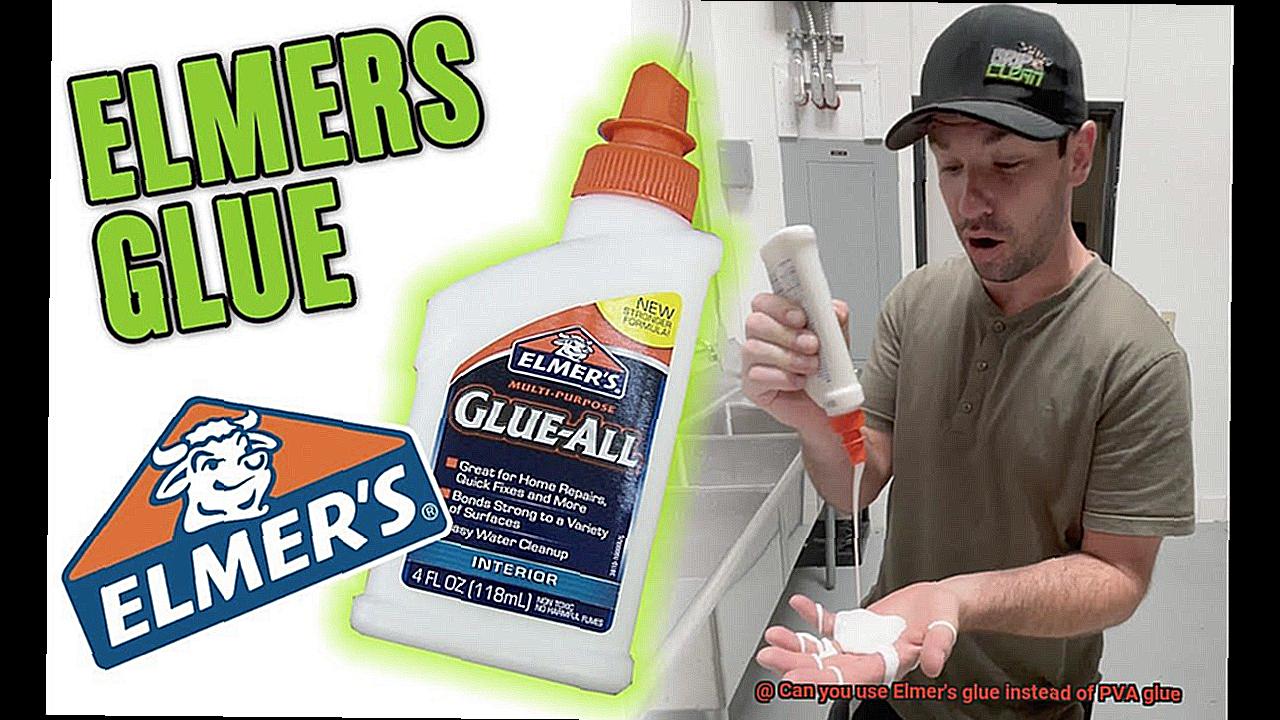
Elmer’s glue is a versatile adhesive that can be used for various materials such as paper, cardboard, and some fabrics. It’s ideal for projects that require quick drying time, such as school projects or paper crafts. Elmer’s glue creates a clear finish that is easy to clean up, making it perfect for projects where aesthetics matter. However, Elmer’s glue may not be the best option for all projects.
If you need a stronger bond or are working with porous materials like wood, PVA glue would be the better option. PVA glue has a stronger bonding strength compared to Elmer’s glue and is specifically designed for woodworking projects. Additionally, if you’re working on a project that requires archival quality adhesives, then PVA glue is your go-to option. PVA glues are acid-free and known for their archival quality, making them ideal for bookbinding and other art conservation projects.
Here are some factors to consider when deciding between Elmer’s glue and PVA glue:
Materials Being Used:
Elmer’s glue is great for paper-based projects while PVA glue is better suited for porous materials like wood.
Drying Time:
Elmer’s glue dries faster than PVA glue, making it perfect for quick projects. However, if time isn’t an issue and you need a stronger bond over time, PVA glue would be the better choice.
Quality of Materials:
If you need archival quality adhesives, then PVA glue should be your go-to option.
Advantages of Using Elmer’s Glue
Its benefits over PVA glue are numerous, making it the go-to choice for many. So what are the advantages of using Elmer’s glue?
Firstly, Elmer’s glue is widely available and affordable. You can easily purchase it at most stores and online retailers, without breaking the bank. And with its versatility, you can use it to bond a variety of materials such as paper, cardboard, wood, and even some plastics. It’s a strong adhesive that dries clear, making it perfect for a range of applications.

In addition to its versatility, Elmer’s glue has a smooth consistency that makes it easy to apply without creating bumps or lumps on your surface. And the best part? You don’t need any special tools or equipment to use it. Cleanup is also a breeze – simply use water before it dries.
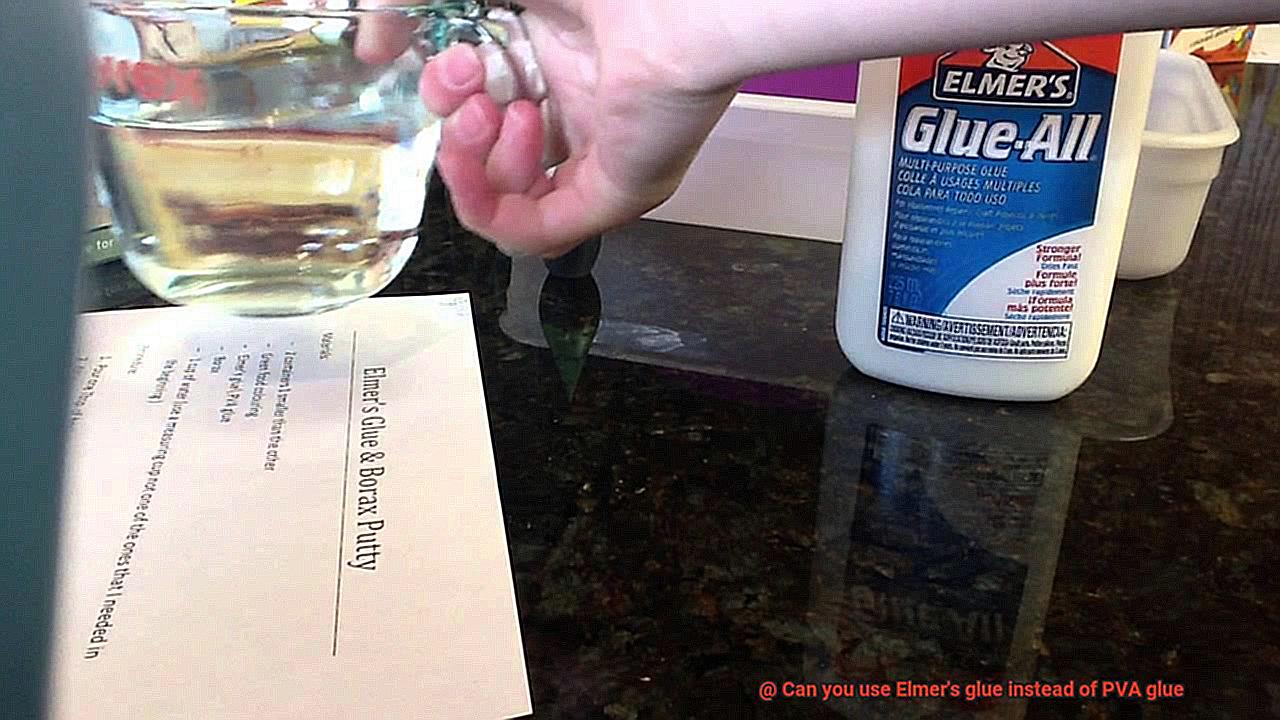
When it comes to safety, Elmer’s glue is non-toxic and safe for use around children and pets. Unlike PVA glue, it doesn’t emit harmful fumes or contain chemicals that can cause skin or eye irritation.
Disadvantages of Using Elmer’s Glue
While Elmer’s glue may seem like a go-to option, it’s essential to know its drawbacks before making your final choice. As an expert in this field, I am here to discuss the disadvantages of using Elmer’s glue.
Firstly, Elmer’s glue has a weaker bond when compared to PVA glue. While it might suffice for basic crafts and school projects, it may not hold up well for heavy-duty or complex projects. In contrast, PVA glue has a stronger bond and can withstand more pressure and weight.
Secondly, Elmer’s glue is not compatible with all surfaces. While it works well on porous surfaces such as paper, cardboard, and wood, it may not adhere well to non-porous surfaces such as plastic or metal. On the other hand, PVA glue can bond to a wider range of surfaces, making it more versatile.
Another drawback of Elmer’s glue is its extended drying time. It takes longer to dry than PVA glue, which can be problematic when working on time-sensitive projects or when multiple layers are required. Additionally, Elmer’s glue may shrink as it dries, causing warping or distortion in some materials.
Lastly, Elmer’s glue is not waterproof or heat-resistant. It might not hold up well in humid or wet conditions and may melt or break down if exposed to high temperatures. Conversely, PVA glue is water-resistant and can withstand higher temperatures.
Considerations When Choosing Between Elmer’s and PVA Glues
As an expert in this field, I have conducted research to help you make an informed decision.
The first consideration is the type of project you’re working on. For projects that require a strong hold, such as woodworking or carpentry, Elmer’s glue is the perfect choice. However, if you’re working on an artistic or craft project that requires a clear or flexible adhesive, PVA glue is the way to go.
The drying time of the glue is another important factor to consider. If you need to finish your project quickly, Elmer’s glue dries faster than PVA glue. However, PVA glue allows you to make adjustments or reposition materials after applying it.
Water resistance is also a crucial consideration. If your project requires water resistance, then PVA glue should be your choice. Elmer’s glue is not waterproof and can break down if exposed to moisture over time.
Finally, consider the cost and availability of each type of glue. Elmer’s glue is widely available and relatively inexpensive compared to PVA glue, which can be more expensive and harder to find in some areas.
Best Practices for Working with Adhesives
By following these best practices for working with adhesives, you can take on any project with confidence and ensure a strong bond.
First and foremost, always read and follow the manufacturer’s instructions for the specific adhesive you are using. This is crucial to ensure that you are using the adhesive correctly and that it will provide a durable bond.
In addition, make sure to work in a well-ventilated area and wear protective gear such as gloves, safety glasses, or a mask if necessary. Many adhesives contain harmful chemicals that can be dangerous if inhaled, so good airflow is essential.
Proper preparation of the surfaces you will be bonding is also key. This may involve cleaning the surfaces thoroughly, sanding them to create a rougher texture for better adhesion, or even using a primer or other preparatory product.
When it comes time to apply the adhesive, be sure to do so evenly and in the right amount. Too much adhesive can lead to dripping and messiness, while too little may not provide a strong enough bond. Allow the adhesive enough time to fully cure before handling or moving the bonded items.
It’s important to note that different adhesives may be better suited for different projects based on factors like drying time, water resistance, and availability. Consider these factors when selecting an adhesive for your project.
Common Mistakes to Avoid when Working with Adhesives
Adhesives are a crucial tool in our arsenal for repairing and creating objects of all shapes and sizes. However, working with adhesives can be tricky, and making even the slightest mistake can lead to disastrous results. In order to achieve a strong and lasting bond, it’s essential to avoid these common mistakes when working with adhesives.
First and foremost, choosing the wrong type of glue for the job is an often-made mistake. It may be tempting to use whatever adhesive you have on hand, but it’s essential to select the right adhesive for your specific project. For example, using Elmer’s glue for a woodworking project that requires a stronger adhesive or using heavy-duty epoxy for paper crafts would be a recipe for disaster. Take the time to research beforehand to determine which adhesive will work best for your specific project.
Another common mistake when working with adhesives is not properly preparing the surfaces to be bonded. It’s important to clean and dry the surfaces thoroughly before applying adhesive. Any dirt, dust, or moisture left on the surface could weaken the bond strength and lead to a subpar hold.
Applying too little or too much adhesive can also lead to problems. Not using enough adhesive could result in a weak bond, while applying too much could cause excess glue to seep out from between the surfaces being bonded. It’s important to follow the manufacturer’s instructions carefully when applying adhesive.
Finally, rushing the drying process is another mistake that should be avoided at all costs. Adhesives require patience – allowing enough time for the glue to dry and cure properly before handling or using the object is crucial. Rushing the process could result in a weaker bond or even complete failure of the bond.
Safety Tips for Working with Adhesives
Working with adhesives can be an exciting and rewarding experience, but it’s important to prioritize safety to avoid any accidents or injuries. Here are five safety tips that should be followed when working with adhesives.
Firstly, ensure that you work in a well-ventilated area. Adhesives contain chemicals that can release harmful fumes. Inhaling these fumes can lead to respiratory issues, so it’s essential to have plenty of fresh air circulating around you while you work. If you’re working indoors, open windows or use a fan to keep the air moving, and if you’re working outdoors, make sure there’s enough space around you.
Secondly, wear protective gear. Gloves and eye protection should always be worn when handling adhesives to protect your skin and eyes from irritation or harm. Additionally, using a respirator mask will help keep any harmful fumes from entering your lungs.
Keeping your work area clean is also crucial for safety. Clean up any spills immediately to prevent slips, trips, and falls. It’s also essential to keep your work area organized to avoid knocking over any containers or materials.
Reading and following instructions on the adhesive container is another important safety measure when working with adhesives. The instructions provide valuable information about how to use the adhesive safely and effectively. Make sure to read them carefully and follow them closely.
Lastly, store your adhesives properly. Adhesives should be stored in a cool, dry place away from direct sunlight and sources of heat. This helps maintain their effectiveness and prevents any accidents or leaks.
It’s important to note that specific safety precautions may vary depending on the type of adhesive being used. Be sure to read the label and follow the manufacturer’s instructions for safe usage.
AJ0k6Ngcu6s” >
Conclusion
To wrap it up, Elmer’s glue is a viable alternative to PVA glue depending on the project requirements. Both types of adhesives have their own set of advantages and disadvantages, so it’s crucial to assess the materials involved before making a choice. If you’re working on paper-based crafts, Elmer’s glue is an excellent option due to its low acidity and transparent finish. It’s also effortless to clean up with water and can be painted or sanded once dry.
On the flip side, PVA glue is renowned for its robust bonding capabilities and versatility. Whether you’re working with wood, metal, plastic or fabric, PVA glue has got you covered. Additionally, it boasts high water resistance properties that make it perfect for outdoor projects.
When deciding between these two glues, consider factors such as drying time, cost-effectiveness, availability of materials and water resistance properties. It’s also essential to follow safety precautions when handling adhesives and avoid common mistakes.

